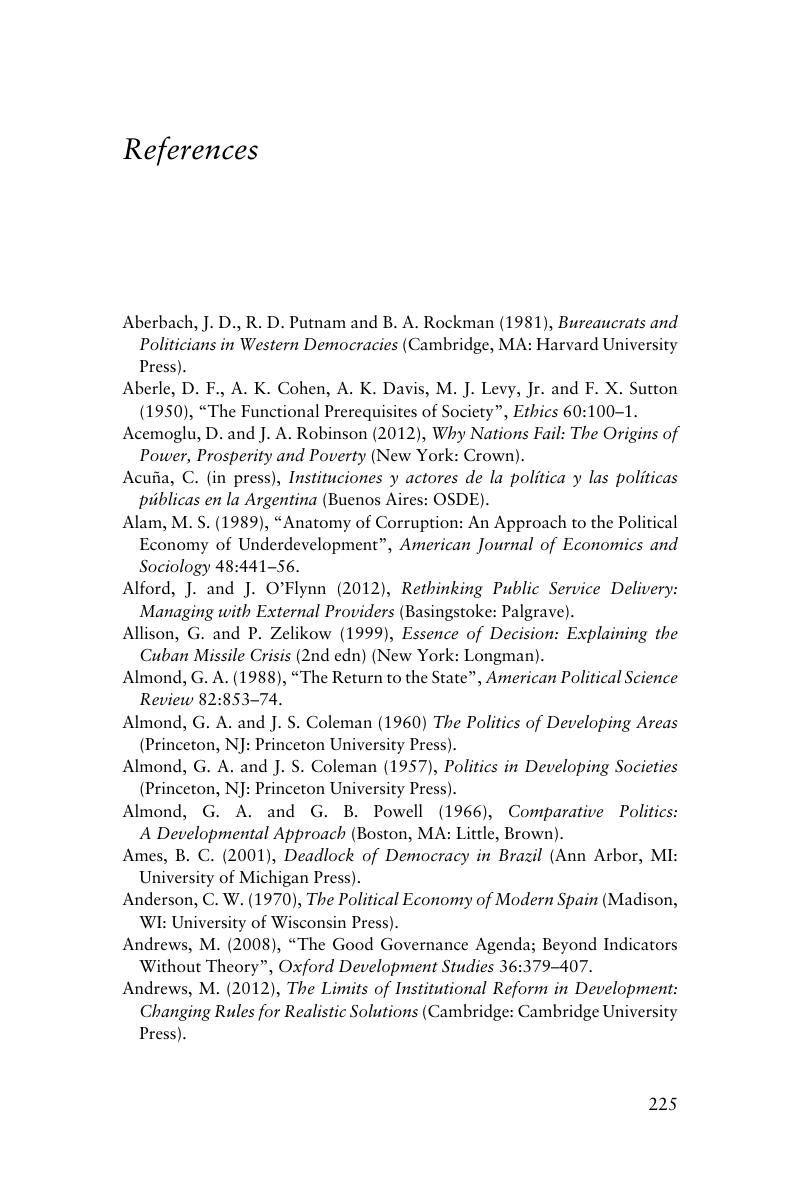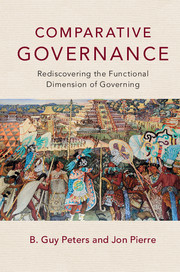Book contents
- Frontmatter
- Contents
- Preface
- 1 The Governance Problem
- 2 The Theory of Governance
- 3 Decision–Making: The Essence of Governing
- 4 Governance and Comparative Politics
- 5 The Institutional Politics of Inter–governmental Relationships
- 6 Implementation, Administration, and Governance
- 7 Governance Failure, Functional Failure, and State Failure
- 8 The Change of Governance and the Governance of Change
- 9 Conclusions: Governance, Functionalism, and Comparative Politics
- References
- Index
- References
References
Published online by Cambridge University Press: 05 September 2016
- Frontmatter
- Contents
- Preface
- 1 The Governance Problem
- 2 The Theory of Governance
- 3 Decision–Making: The Essence of Governing
- 4 Governance and Comparative Politics
- 5 The Institutional Politics of Inter–governmental Relationships
- 6 Implementation, Administration, and Governance
- 7 Governance Failure, Functional Failure, and State Failure
- 8 The Change of Governance and the Governance of Change
- 9 Conclusions: Governance, Functionalism, and Comparative Politics
- References
- Index
- References
Summary

- Type
- Chapter
- Information
- Comparative GovernanceRediscovering the Functional Dimension of Governing, pp. 225 - 254Publisher: Cambridge University PressPrint publication year: 2016



